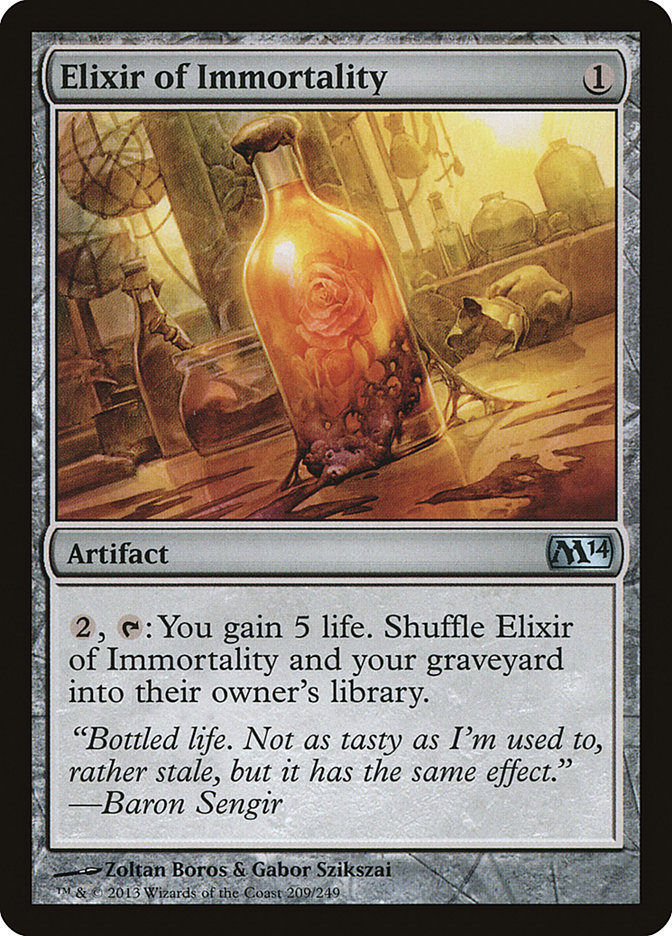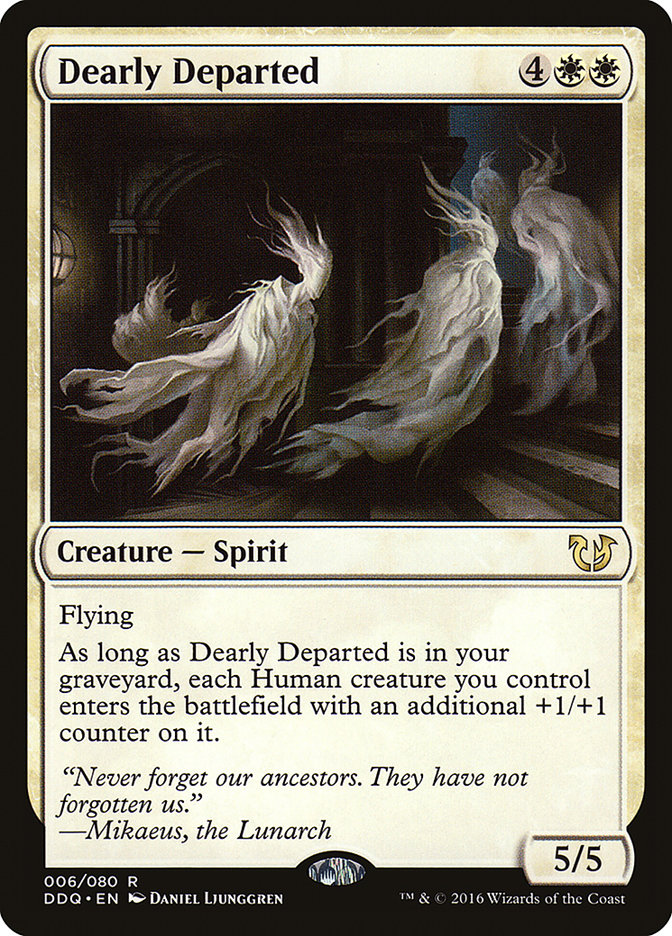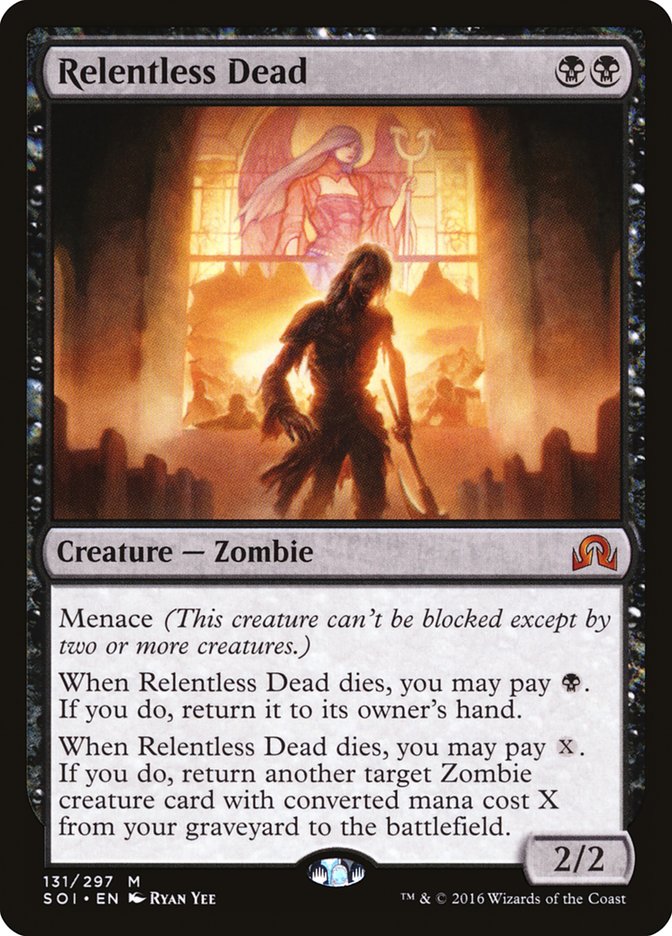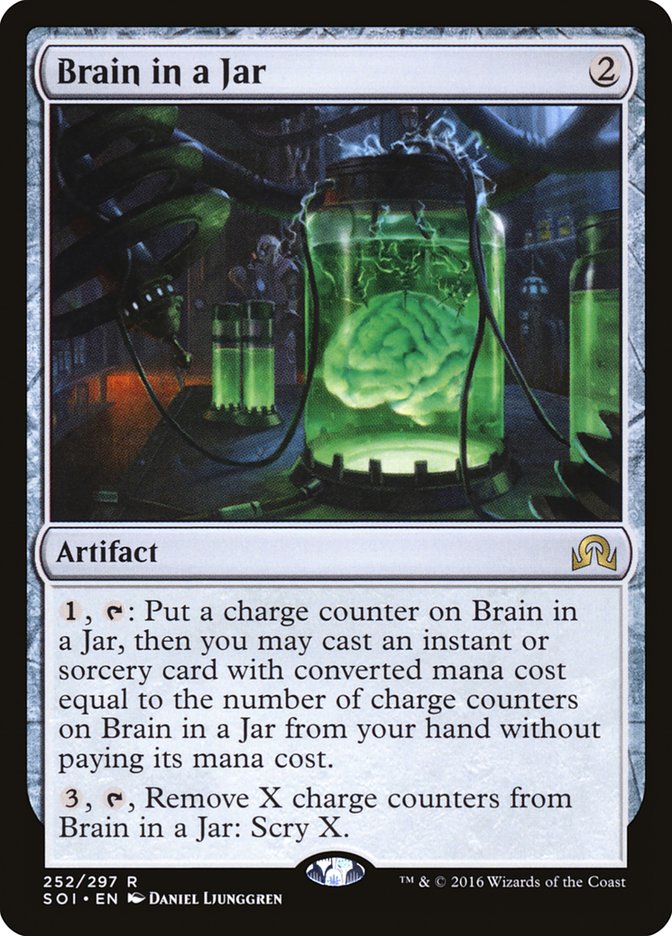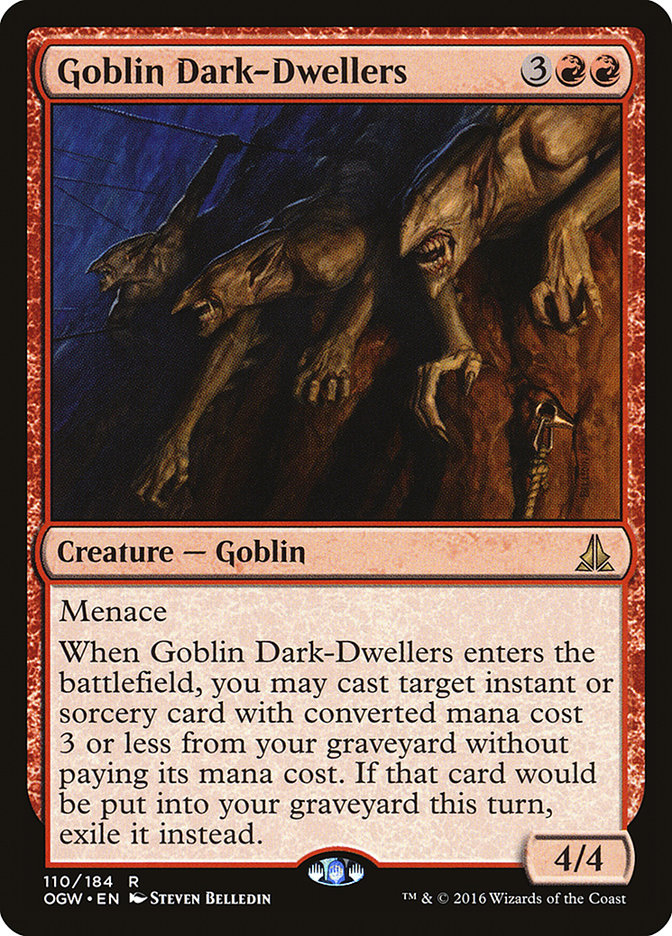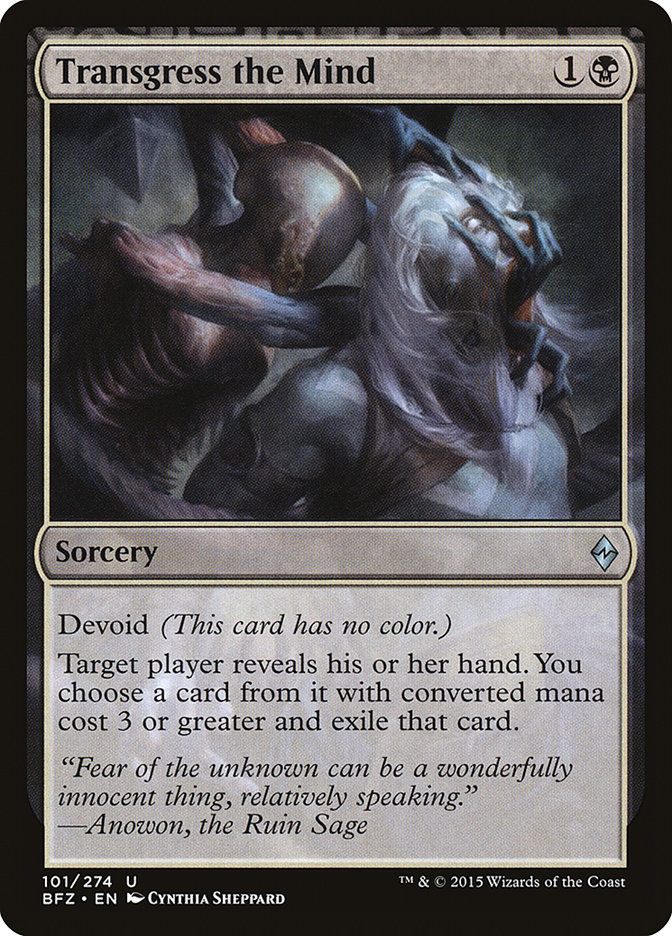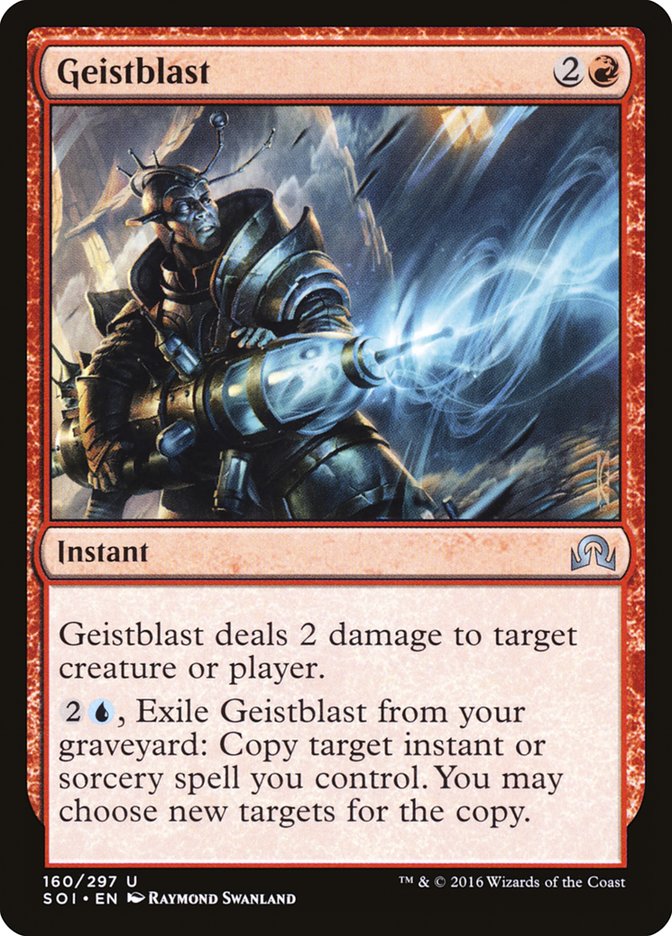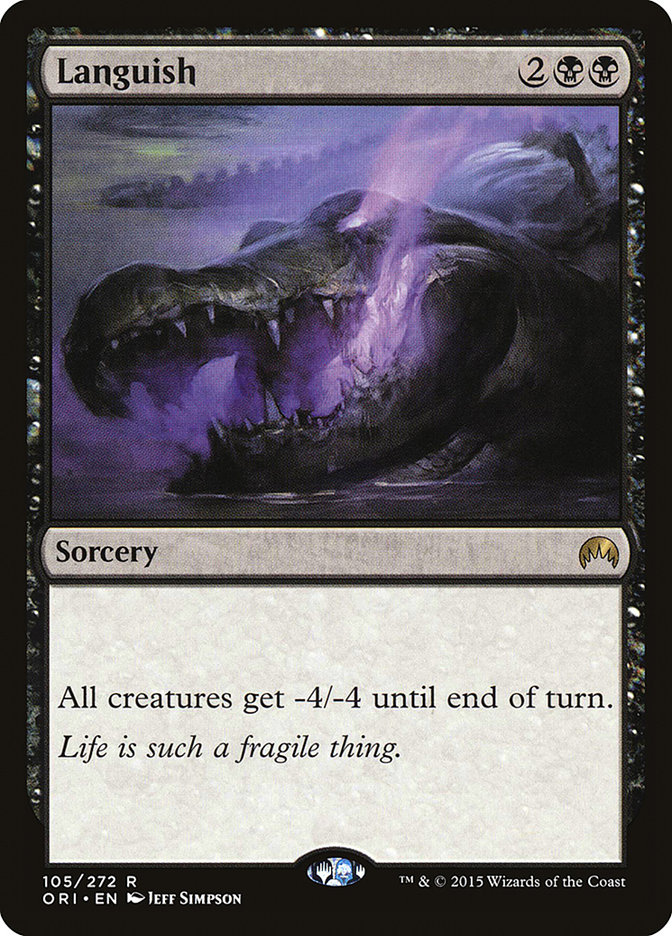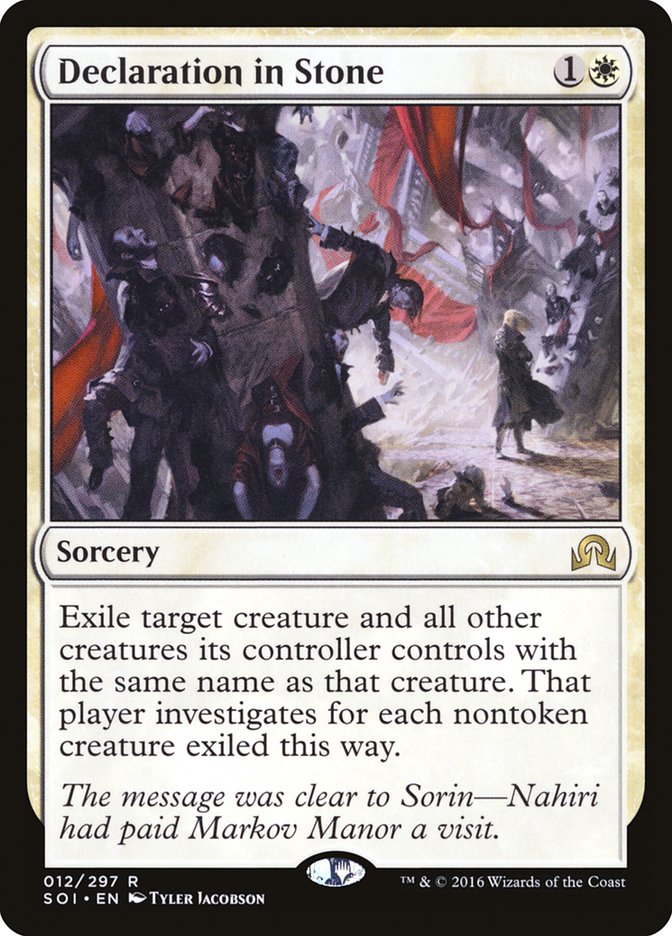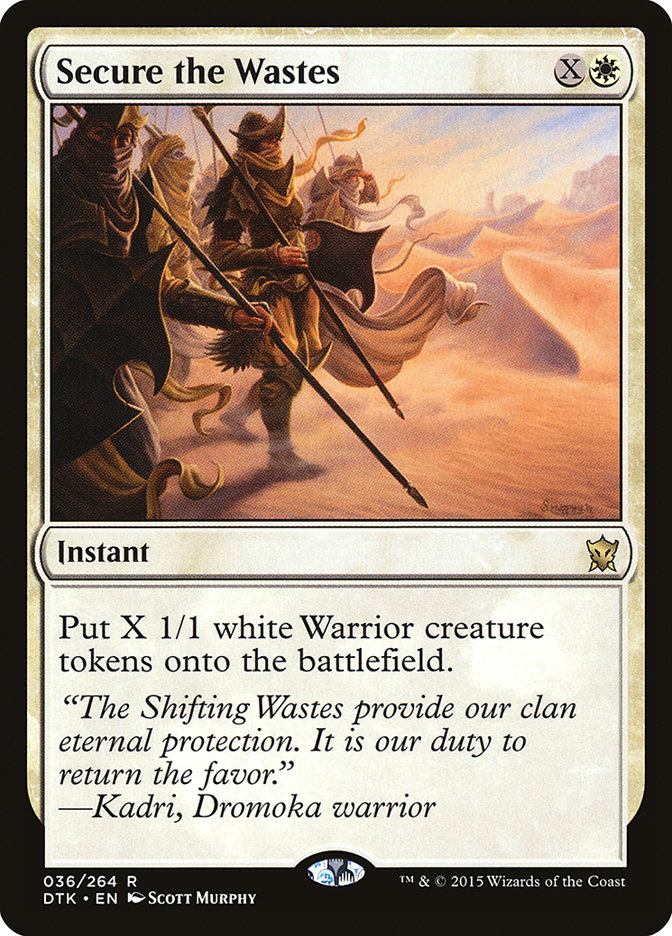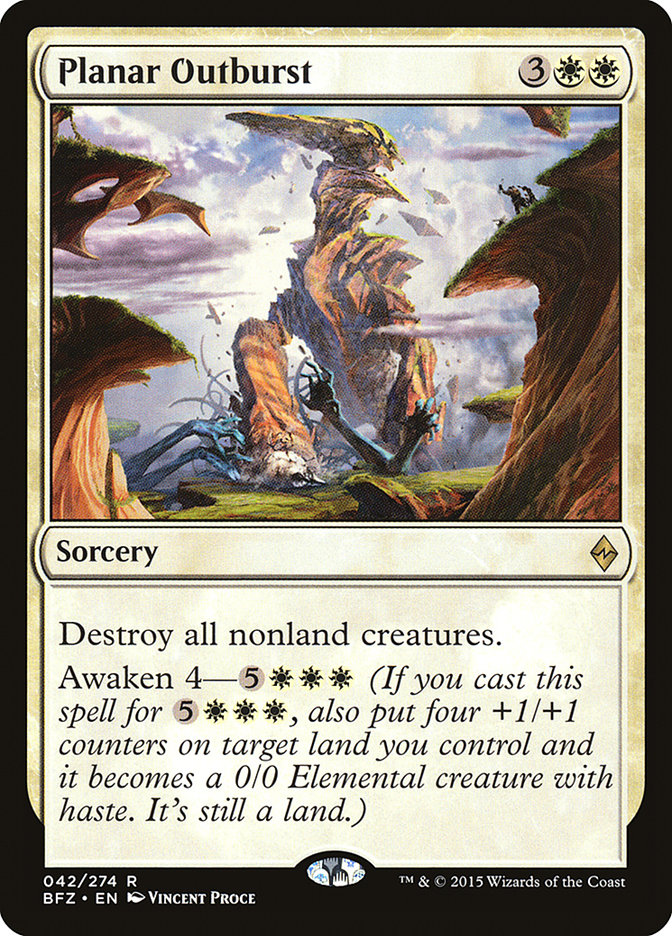Being immortal isn’t for everyone, namely Humans, so we’ve tried to figure out ways to cheat death in one form of another ever since we realized we wanted to. While we’d like all parts of us to live forever, we usually look at it in pieces, namely our soul, our body, and our mind. Magic, and more specifically Shadows over Innistrad and its predecessor, have done a lot toward immortalizing the body and soul.
Most sapient beings on Innistrad believe in or experience some form of afterlife, usually one that perpetuates the soul or similar essence of a creature to impact the world after the body has died or been otherwise destroyed. Their memories and emotions often drive them to linger in the physical world.
The afterlife can also involve the reanimation of the flesh, but usually not the soul. Innistrad’s necromancers harvest the sinew, muscle, and organs of the deceased and fashion them into empty vessels of sinister magic. No soul, no mess. Uncomplicated.
Magic’s history has focused almost entirely on these two most common forms of life after life, but Shadows over Innistrad adds one additional form to perpetuate life.
Preserving a brain isn’t really the preservation of either the soul or the body, at least not in the traditional sense. Rather, preserving a brain in Innistrad is about the persistence of knowledge. In the horror tropes of other stories from the last century or so, keeping a brain in a jar was a way to ostensibly keep a person’s knowledge alive. It also provides for a good, creepy visual for the laboratories of mad scientists.
While a Brain in a Jar is at best titillating and at worst viscerally upsetting, the design and flavor mixed within this card is exceptional. Think of it: a scientist from Innistrad is studying the brain of a long-dead sorcerer, only to find the magic that propelled that sorcerer to renown still locked inside. Uncovering those incantations takes time, effort, and experimentation, represented by the mana spent to unlock these secrets through scrying. My only qualm is a philosophical one: should it have been an artifact creature?
So how do we use it? How do we bring the fragile Brain in a Jar into battle?
The brain is gray; no, really, it’s gray. You can play it in most any deck with instants and sorceries, regardless of color. There isn’t really low-hanging fruit, or low-hanging cerebellum, with this artifact. It can be used about anywhere.
Instead, let’s look at Brain in a Jar and figure out how it can help us. While being cool and flavorful, it also provides two tangible effects: it allows you to cast with timings that you normally couldn’t, and it lets you save mana to cast multiple spells in a turn where you normally couldn’t. Both of these effects have proved powerful thanks to cards like Leyline of Anticipation and Goblin Dark-Dwellers.
I tried lots of different color combinations, spells, and configurations before landing on today’s two decks. While there were many other attempts, these were the only two that stuck out because of their playability and power.
Speaking of brains, let’s bring other people’s minds into this Cartesian theater. Transgress the Mind is the closest thing we have to a Thoughtseize these days, and it costs twice as much and doesn’t actually hit everything. Still, it is probably the singularly most powerful hand disruption spell in Standard, so it still deserves our respect despite its broader irrelevance.
Discard spells have typically been confined to slow sorceries. Transgress the Mind is powerful, targeted discard, and with Brain in a Jar, it can be done on their draw step before entering their main phase, meaning they’ll have drawn their card and passed priority to you. This helps discard decks avoid the dreaded topdeck problem, wherein your opponent draws a powerful card with you otherwise unable to interact. Combining Transgress the Mind with powerful sorceries, and even the aforementioned Goblin Dark-Dwellers, keeps our deck focused on disruption and efficiency.
As you’ll recall with the brain in your head jar, Brain in a Jar also helps us be efficient on a turn, casting one expensive spell off Brain in a Jar and keeping up mana for countermagic, an activated ability, or a second (or third) spell. Geistblast might be the idela use for this extra mana. Not only are you casting powerful spells, you’re doing so twice!
While you might think this puts us in a broad, Grixis-based strategy, red and black feature some of the most powerful abilities that focus on Brain in a Jar’s strengths. Thus, blue is only a small splash in this first list, but it’s one that counts.
Creatures (7)
Lands (25)
Spells (28)
- 3 Dragon Fodder
- 1 Ultimate Price
- 2 Read the Bones
- 4 Tormenting Voice
- 3 Kolaghan's Command
- 3 Languish
- 4 Transgress the Mind
- 4 Brain in a Jar
- 4 Geistblast
Sideboard

Creatures
Hangarback Walker has fallen out of favor, thanks in one part to the prevalence of Declaration in Stone and in the other part from Reflector Mage’s ability to utterly invalidate it. However, this card can, for curve purposes, act like Brain in a Jar numbers five through seven. You can play them on turn 2 and spend a mana each turn to tick them up.
The deck features many ways to smash a Walker open on command; this is essential to playing the card effectively anymore. Pia and Kiran Nalaar is one of those ways, and the couple can break the glass on any extra Brain in a Jar you have lying around late in the game. Goblin Dark-Dwellers belongs in most midrange-type decks that have a considerable focus on instants and sorceries, and their home is here in the same way.
Spells
Curve is important for a deck like this. We need to make each turn relevant, all while ticking up a Brain in a Jar. Normally midrange decks play on the three-drop, but I made sure this deck had lots of options on two as well. Tormenting Voice is probably my favorite red draw spell ever printed, as you’re doing so much for two mana, often setting up your Goblin Dark-Dwellers down the pike.
Dragon Fodder is, I believe, well-positioned to take advantage of this. Creating two 1/1s at instant speed isn’t breaking the format open, but following it up with efficient spell after efficient spell justifies their use, especially if those little Goblins buy you the time to do so. Kolaghan’s Command can recover one of the deck’s few creatures or it can smash Hangarback Walker in response to non-lethal removal. Moreover, the discard works well with Transgress the Mind for a one-two punch of discard when those extra cards count.
Languish is perhaps Brain in the Jar’s biggest payoff. Casting instant-speed removal is great, but casting instant-speed sweepers is extremely rare and, as is the case with cards like Fated Retribution, they often come at an unacceptable mana cost. At four mana, you can easily cast it without the Brain in a Jar, but if you have time to set up the Brain and Languish, you can cripple end-step decks like Collected Company.
Lands
With only the second half of Geistblast requiring blue mana, five sources made it to the maindeck, all of which provide some other use besides their color production. Foreboding Ruins is fickle on the cards it needs, but Sunken Hollow fits that bill as well as an untapped blue source when I’m ready to activate Geistblast right away. Wandering Fumarole is a good final punch after you’ve finally exhausted your hand and your Brain in a Jar.
Sideboard
If Transgress the Mind is good against most decks at instant speed, Duress will be skull-crushing against control or other midrange opponents. Duress is good for the same reason Transgress the Mind is good with Brain in a Jar, but it’s not time for it in the maindeck yet.
Quadruple Rending Volley may seem like overkill, but let’s face it, we’re now in a white and blue world between Mono-White Humans and Collected Company. Add in the ability to crush cards like Dragonlord Ojutai and Archangel Avacyn worry-free and you’ve got a highly relevant sideboard card.
Ruinous Path is a growing necessity thanks to the growing popularity of such out-of-range targets as Nahiri, the Harbinger and Chandra, Flamecaller. With Brain in a Jar’s timing restriction removal, this can go back to being a Hero’s Downfall. Exquisite Firecraft can slide in alongside Ruinous Path as creature removal, but like Ruinous Path, it can become a powerful four-damage smack late in the game. A fourth copy of Languish rests in the sideboard because Cryptolith Rite is unbeatable for Grixis decks with no lifegain that don’t draw Languish.
The second deck riffs on the most successful Brain in a Jar deck in Standard, made popular by notable brewer SaffronOlive.
Lands (23)
Spells (37)
- 1 Disperse
- 4 Anticipate
- 4 Part the Waterveil
- 4 Grip of the Roil
- 4 Pore Over the Pages
- 4 Brain in a Jar
- 4 Engulf the Shore
- 4 Pieces of the Puzzle
- 4 Rise from the Tides
- 4 Nagging Thoughts
Sideboard

SaffronOlive’s deck has seen a lot of discussion and play at my local game store, but it’s faded off a bit since then. And don’t worry, this list isn’t just another derivative mono-blue list. It’s a way to acknowledge the hard work he and the others before him did at creating a great deck.
No, my Brain in a Jar deck here doesn’t use blue, a color commonly associated with instants and sorceries. Let’s go a different way.
Declaration in Stone is one of the most powerful single-target removal spells white’s gotten in a long time. It just exiles it. No chance to return it by breaking a Journey to Nowhere, no narrow condition like Surge of Righteousness. Just get rid of it. Sure, they get Clues, but it absolutely does get rid of a problem creature or, if you’re lucky, multiple cards or nontoken creatures. Being a sorcery is a big hassle, though; wouldn’t it be great if this cheap spell could easily be cast at instant speed, undoing powerful sorcery-speed plays on your opponent’s side?
Brain in a Jar is here to help!
While looking to support this white sorcery, I actually found there was more than enough in white to stick to one color, using what would be fixing slots in the manabase to more powerful, utilitarian ends.
The Brain has seen the light!
Creatures (7)
Planeswalkers (4)
Lands (25)
Spells (24)
- 4 Secure the Wastes
- 3 Hallowed Moonlight
- 3 Healing Hands
- 4 Planar Outburst
- 3 Encircling Fissure
- 3 Brain in a Jar
- 4 Declaration in Stone
Sideboard

In contrast to the first deck, this deck has undergone considerable testing on Magic Online and has come out a powerful contender. In effect, this deck leverages the format’s most powerful white spells, including Secure the Wastes and Gideon, Ally of Zendikar, to supplement Brain in a Jar and on-curve spells. Planar Outburst, while very playable on its own, is at its best as an instant-speed sweeper hammering down on your opponent’s turn.
There are two cards that really deserve props in the maindeck, Encircling Fissure and Healing Hands. While it may not look like it, these cards are actually the glue that held the deck together. Encircling Fissure provides critical time when you’re purely in defense, allowing you another land drop or another Brain in a Jar counter to get closer to sweeping away the boarding or casting a backbreaking Secure the Wastes.
While you can’t use the awaken cost when using Brain in a Jar, Encircling Fissure is easy to cast with that cost normally if it’s relevant to the battlefield. If you have creatures out, this can be a blowout in combat, allowing your army of Warrior tokens or Eldrazi to decimate an attack unscathed. Healing Hands is a small Fog that replaces itself. It does not need to be cast strategically at the right time, but it can provide you a bit of a buffer whenever it’s convenient to cast for you.
Gideon, Ally of Zendikar can be useful with each of his abilities. He can die as an emblem for your army of Warriors or Thopters, he can contribute to activate Westvale Abbey, or he come roaring in for massive damage. If they don’t end up blocking to preserve their team, you can even cast Planar Outburst to blow out the battlefield and keep your Gideon!
I really like both decks. The white one may look a bit dodgy, but trust me, this deck is a workout for the Brain in a Jar in your deck and the brain on your shoulders!
Brain in a Jar is as useful and powerful as your imagination; it’s even got potential in Modern. Maybe you’ve seen some of those decks with Beck // Call and Breaking // Entering bouncing around, and they’ve got the neurons firing.
You’ve got a Brain in a Jar under your arm too. What strategies and sorceries will you tap into to make the “gray matter” matter?


